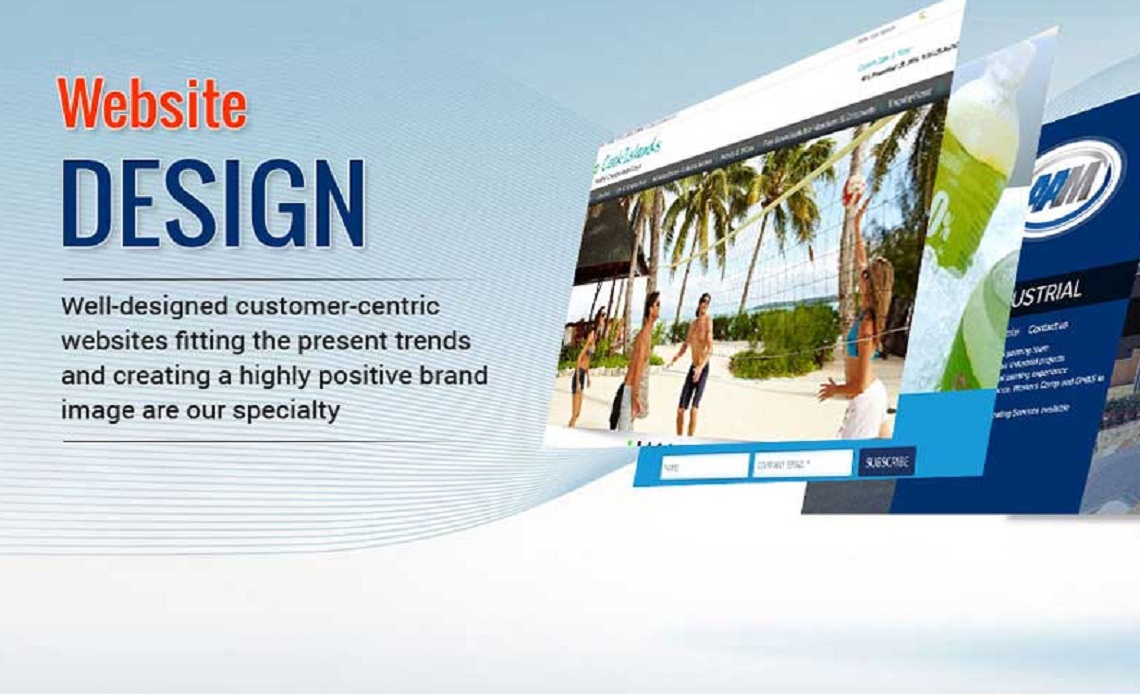The Full Guide to Searching For Top Solutions in Web Design Pretoria
The Full Guide to Searching For Top Solutions in Web Design Pretoria
Blog Article
The Fundamentals of Reliable Website Design for Newbies
Reliable web design is a complex technique that dramatically impacts user involvement and fulfillment (Web Design Pretoria). For beginners, realizing the basics-- such as understanding customer experience, selecting a suitable shade scheme, and ensuring responsive style-- can be intimidating yet rewarding.
Understanding Customer Experience

Secret elements of UX include customer research, which assists identify the needs and preferences of the target market, and usability testing, which examines just how actual individuals connect with the site. User-friendly navigating, responsive style, and clear, engaging content are vital aspects that add to a positive individual experience.
Additionally, the emotional response elicited from users throughout their communications can dramatically influence their assumption of the brand name - Web Design Pretoria. A web site that focuses on UX cultivates trust and motivates repeat check outs, ultimately driving conversions and consumer loyalty. Understanding customer experience is not merely an option for aspiring web developers; it is a fundamental concept that underpins effective digital interactions and affects the overall effectiveness of internet design.
Choosing the Right Color Palette
Choosing the ideal shade combination is typically a decisive element in website design that can profoundly influence customer perception and involvement. A well-thought-out color design not just improves the visual appeal of a web site yet likewise plays a crucial duty in branding and communicating the desired message.
When selecting shades, take into consideration the psychological effects they have on individuals. Blue typically evokes feelings of trust fund and integrity, while red can boost exhilaration or necessity. Make use of shade concept concepts, such as complementary and similar color design, to produce visual harmony.
Furthermore, make certain that your color options align with your target audience and sector criteria. Performing individual study can offer beneficial understandings right into recommended color plans that reverberate with your demographic. In addition, keeping enough comparison in between message and background shades is vital for readability and access, guaranteeing that all users can navigate your website easily.
Lastly, uniformity is important; use your color combination uniformly across all web pages to reinforce your brand identification. By thoughtfully choosing your color palette, you can create an engaging individual experience that astounds site visitors and motivates them to involve with your material.
Value of Responsive Style
A well-designed web site not just mesmerizes with its shade scheme however additionally adjusts seamlessly to various gadgets and display sizes. Receptive layout is essential in today's electronic landscape, where individuals access the net through a myriad of devices, including tablet computers, desktops, and smartphones. Web Design Pretoria. A web site that stops working to get used to various display dimensions risks estranging a substantial section of its target market, inevitably causing greater bounce rates and lessened individual involvement
Additionally, search engines like Google focus on mobile-friendly web sites in their ranking algorithms, implying that responsive style is not merely a customer experience enhancement but likewise an essential part of reliable seo (SEARCH ENGINE OPTIMIZATION) By ensuring that your web site is receptive, you improve use, making it easier for visitors to connect and browse with your web content, no matter the device they are making use of.
Including receptive style techniques, such as fluid grids, adaptable photos, and media inquiries, allows a web site to maintain a appealing and regular aesthetic across various systems. This versatility not only improves individual satisfaction however additionally cultivates brand reputation and trust, as users are a lot more likely to engage with a website that offers a smooth experience.
Browsing Typography Essentials
Typography plays a pivotal role in internet design, working as the visual voice of a website's official site content. It encompasses the typefaces, sizes, spacing, and overall presentation of text, which substantially influences readability and individual experience. To start browsing typography basics, it's necessary to choose a font that lines up with the brand name's tone and message. Serif fonts frequently convey tradition and reliability, while sans-serif font styles project modernity and clearness.
Following, take into consideration font style size and line height. A general policy is to utilize a minimum font dimension of 16 pixels for body text to make sure clarity across devices. Ample line news elevation, generally 1.5 times the typeface size, boosts readability by providing sufficient room in between lines.
Stay clear of making use of also lots of various fonts; a mix of two or 3 can create an unified design. Mastering typography will certainly elevate your web style, making your site not just attractive however easy to use and additionally useful.

Using Visual Pecking Order
At the core of effective web layout lies the concept of aesthetic pecking order, which overviews individuals via content in such a way that is both interesting and user-friendly. Aesthetic pecking order refers to the plan of components on a website to symbolize their significance through dimension, positioning, color, and comparison. By employing these strategies, designers can lead users' focus to essential details, enhancing their overall experience.
To establish a clear visual pecking order, start by identifying one of the most vital components on your page, such as headings, contacts us to action, or photos. Usage bigger font styles and vibrant colors for primary headings to make them stand out. Subheadings should be a little smaller, preserving a sensible flow that routes the user's gaze downward.
Furthermore, comparison plays an important duty; contrasting shades can make vital aspects pop, while regular spacing produces a tidy design that is very easy to browse. Utilizing whitespace successfully also enhances readability, permitting users to concentrate on the material without feeling bewildered.
Eventually, a well-implemented aesthetic power structure not only enhances customer engagement but also helps with better comprehension, making it a fundamental aspect of efficient internet layout.
Verdict
In summary, effective web design for novices requires an extensive understanding of individual experience, selection of proper color combinations, and the application of responsive design. Focusing on these aspects cultivates a setting conducive to individual involvement and satisfaction.

At the core of efficient internet design exists the principle of aesthetic hierarchy, which guides customers through content in a means that is both helpful site appealing and user-friendly.In recap, efficient internet design for beginners demands a thorough understanding of individual experience, selection of proper shade combinations, and the application of responsive style.
Report this page